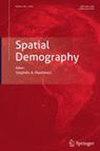西班牙裔人口增长与黑人-白人不平等:人口结构变化,社会地位变化?
IF 1.1
Q3 DEMOGRAPHY
引用次数: 1
摘要
社会科学家断言,西班牙裔人口的增长和再分配改变了美国当地的种族和经济动态。然而,测试这一观点的工作相对较少。我们基于两套关键理论——种族/民族肤色线的变化和(非)移民融入劳动力市场——提出假设,以指导我们对西班牙裔人口集中度变化与黑人-白人经济不平等变化之间关系的分析。我们的第一个差异分析利用了1990年和2000年十年一次的人口普查、美国农业部和CQ出版社投票和选举收集的县级数据。除了评估黑人和白人在收入、贫困和失业方面的差异外,我们还测试了在新的目的地,利益关系是更明显还是更不明显。当西班牙裔人口集中度的变化与黑人和白人经济结果的变化相关联时,我们发现黑人的结果有所改善(例如,失业率和贫困率降低),但白人的结果略有下降。有一些证据表明,这些模式导致新目的地和老目的地的黑人-白人不平等程度下降;然而,这种下降幅度很小,而且只与失业和贫困结果有关。研究结果最终表明,这一时期黑人与白人经济不平等的结构性变化有限。本文章由计算机程序翻译,如有差异,请以英文原文为准。
Hispanic Population Growth and Black–White Inequality: Changing Demographics, Changing Social Positions?
Social scientists assert that the growth and redistribution of the Hispanic population has altered local racial and economic dynamics in the United States. Yet, comparably little work tests this perspective. We develop hypotheses based on two key sets of theories—the shifting racial/ethnic color line and (im)migrant incorporation into labor markets—to guide our analysis of the relationship between changing Hispanic population concentration and changes in black–white economic inequality. Our first-differenced analysis draws on county-level data from the 1990 and 2000 decennial Census, the US Department of Agriculture, and CQ Press Voting and Elections Collection. In addition to assessing black–white disparities in income, poverty, and unemployment, we test whether the relationship of interest is more or less pronounced in new destinations. When shifts in Hispanic concentration are associated with changes in black and white economic outcomes, we find improved outcomes for blacks (e.g., lower unemployment and poverty rates) but modestly diminished outcomes for whites. There is some evidence that these patterns result in declining black–white inequality in both new and established destinations; however, the declines are small and exclusive to unemployment and poverty outcomes. Results ultimately suggest limited structural changes as they relate to black–white economic inequality during this period.
求助全文
通过发布文献求助,成功后即可免费获取论文全文。
去求助
来源期刊

Spatial Demography
DEMOGRAPHY-
自引率
0.00%
发文量
12
期刊介绍:
Spatial Demography focuses on understanding the spatial and spatiotemporal dimension of demographic processes. More specifically, the journal is interested in submissions that include the innovative use and adoption of spatial concepts, geospatial data, spatial technologies, and spatial analytic methods that further our understanding of demographic and policy-related related questions. The journal publishes both substantive and methodological papers from across the discipline of demography and its related fields (including economics, geography, sociology, anthropology, environmental science) and in applications ranging from local to global scale. In addition to research articles the journal will consider for publication review essays, book reviews, and reports/reviews on data, software, and instructional resources.
 求助内容:
求助内容: 应助结果提醒方式:
应助结果提醒方式:


